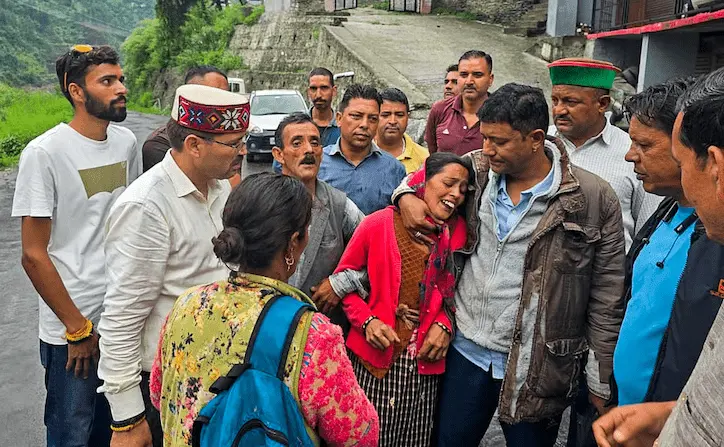
Flash floods and a cloudburst in Himachal Pradesh have claimed two lives and left up to 20 missing near the Indira Priyadarshini Hydroelectric project
Disaster Strikes: Flash Floods Sweep Through Kangra and Kullu
In a harrowing turn of events, Himachal Pradesh was battered by torrential rains, triggering flash floods and a cloudburst that wreaked havoc across Kangra and Kullu districts. The most severe impact was felt near the Indira Priyadarshini Hydroelectric project site in Kangra, where a sudden surge in the Khaniyara Manuni Khad swept away temporary shelters housing laborers. At least two bodies have been recovered, while 15-20 workers remain unaccounted for.
The workers, many of whom were resting after project operations were suspended due to rain, were caught off guard as floodwaters from nearby drains and the swollen Manuni Khad engulfed their colony. The State Disaster Response Force (SDRF), local administration, and revenue officials have launched an intensive search and rescue operation, but treacherous weather and rising water levels continue to hamper efforts.
Meanwhile, in Kullu district, three separate cloudbursts in Sainj and Gadsa valleys led to additional devastation. Homes, roads, and bridges were washed away, and three people are reported missing after attempting to salvage belongings from their homes.
Human Toll and Infrastructure Collapse
The human cost of this natural disaster is mounting. Families of the missing workers, many of whom hail from Himachal Pradesh and Uttar Pradesh, are anxiously awaiting news. Deputy Commissioner Hemraj Bairwa confirmed that six workers are still missing, while others have been rescued or are being traced. One man was last seen fleeing toward a nearby forest in a desperate attempt to escape the rising waters.
The flash floods have also caused extensive damage to infrastructure. In Banjar subdivision, a bridge was completely washed away, and floodwaters entered a government school, damaging agricultural land and livestock shelters. The Manali-Chandigarh National Highway suffered partial damage as the Beas River, swollen by relentless rain, eroded its banks.
Meteorological data paints a grim picture: Palampur recorded 145.5 mm of rainfall, followed by Jogindernagar (113 mm) and Nahan (99.8 mm). The India Meteorological Department has issued an orange alert for heavy rain in several districts, warning of continued flash flood risks through June 29.
Climate Alarm and the Road to Resilience
This latest disaster is a stark reminder of the increasing frequency and intensity of extreme weather events in the Himalayan region. Experts have long warned that climate change is exacerbating rainfall patterns, making cloudbursts and flash floods more common and more deadly.
The tragedy near the Indira Priyadarshini Hydroelectric project also raises questions about preparedness and safety protocols for workers stationed in vulnerable zones. Dharamshala MLA Sudhir Sharma criticized the placement of labor colonies near flood-prone areas and called for a thorough investigation into the lapses that may have contributed to the loss of life.
As rescue operations continue, the focus must also shift to long-term resilience. Strengthening early warning systems, enforcing stricter zoning laws, and investing in climate-resilient infrastructure are no longer optional, they are essential.
This story is still unfolding, and the coming days will reveal the full extent of the damage. But one thing is clear: the hills of Himachal are crying out for urgent attention, not just in the aftermath of disaster, but in the policies that can prevent the next one.
Stay updated with the latest news on Rapido Updates. Keep yourself updated with The World, India News, Entertainment, Market, Automobile, Gadgets, Sports, and many more
Nature’s Fury Unleashed: Cloudbursts Ravage Kullu, Trigger Flash Floods and Chaos, 3 missing
1 thought on “Tragedy in the Hills: Flash Floods Ravage Himachal, Dozens Feared Missing Near Hydroelectric Project”